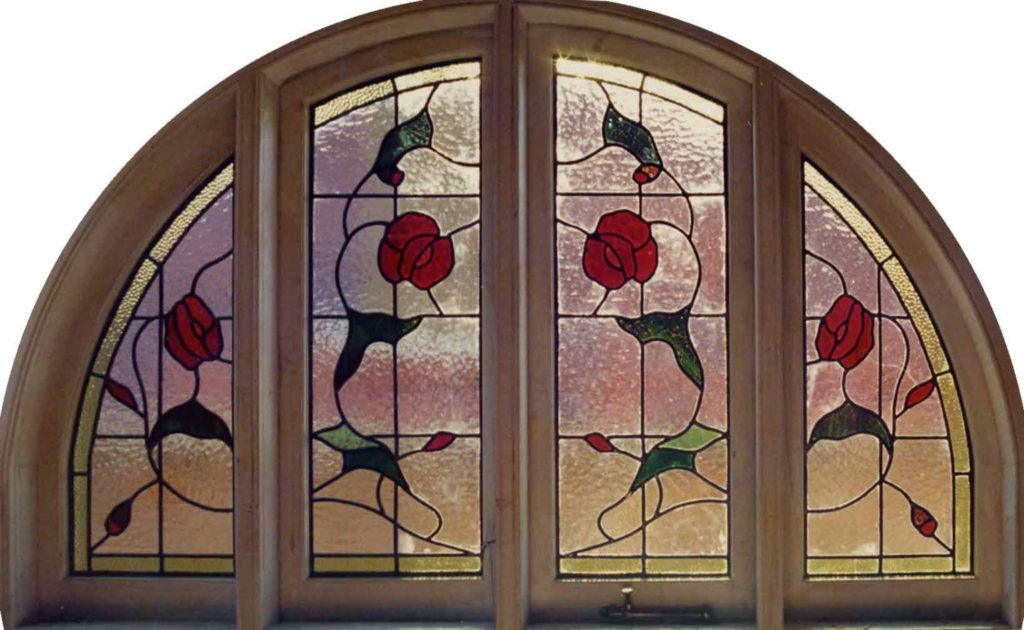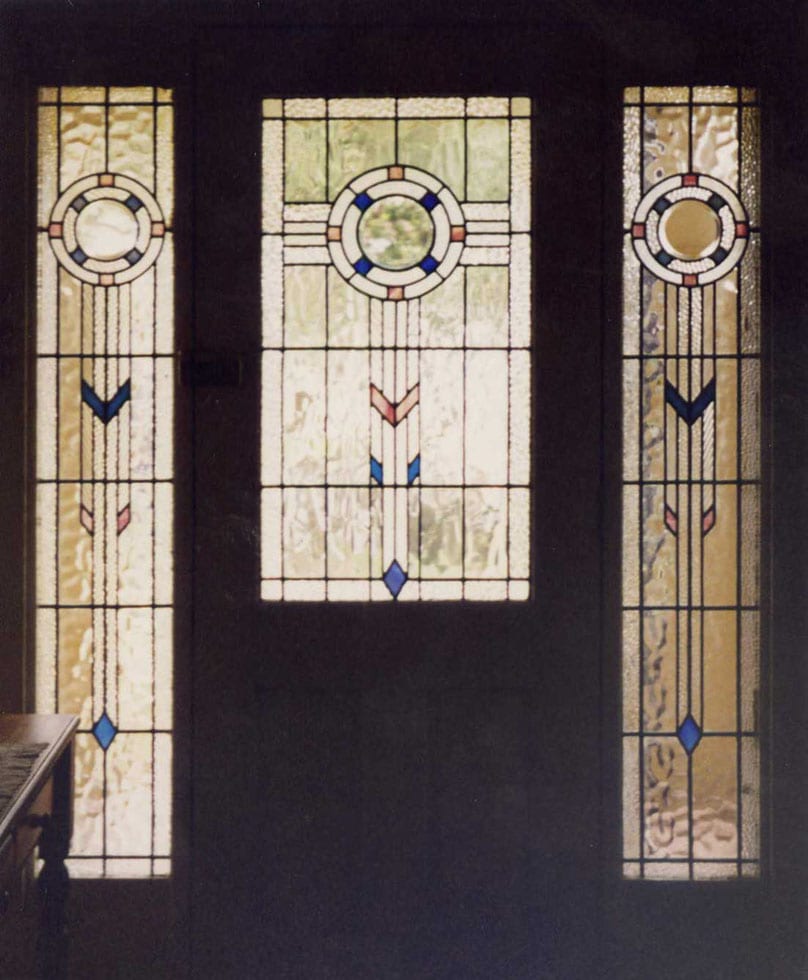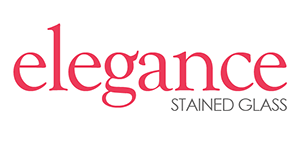Styles
Leadlighting in Australia.
Our early stained glass influences came directly from England and Europe during the early Victorian period. From the time of our Federation there was a strong push in all areas of our lives to define an Australian look and embrace our differences.
As the style of architecture changed, so did the designs and glass used in leadlights. Here is a summary of the features of leadlight styles that may suit the era of your home and suburb. As with anything architectural the changing influences tend to overlap and blend into one another, eg: a house that looks Federation on the outside can finished off with Victorian styled doors, skirting boards, light fittings, etc inside. So feel free to consider the period styles either side of your houses’ era if you like them. Look around your own street and suburb, you will find a mixture of periods as housing designs and streetscapes changed with the times.
Victorian 1870-1900.
Colour filled geometric patterns with soft colours and interesting accent pieces. Used mainly at the front door area, stairwells, and internal windows. Seldom used as front window decoration except as clear-glassed plain grids or diamonds with boarders and accent pieces such as roundels.
- Multiple narrow outer boarders.
- Full of colour, pastel coloured backgrounds.
- Geometric shapes and patterns as main design subjects and accents.
- Simple to very ornate hand painted pictures and scenes.
- Hand painted pieces, medallion with birds, scenes, flowers, decoration etc, some Australiana makes an appearance.
- Interesting pieces of mouth blown glass used – hand spun roundels, pressed detailed glass pieces, globs, facetted jewels,
- High decorated engraved glass, generally dark blue or red.
- Use of house names in leadlight, hand-painted or engraved glass.
- Colours used: Red (esp. in narrow boarders), dark and light blue, sky blue, generally pale greens, light and dark teals, all shades of amber, bronze and champagne, pinks, raspberry and coral (light red) and clear textured/ acid etched.

Birchgrove Inner West Sydney.

Mosman Northern Suburbs Sydney.
Edwardian and Art Nouveau 1890-1905.
An overlapping period from Victorian into Federation with the introduction of non-descript organic shapes but set in Victorian style backgrounds, while the pure geometric patterns still reigned. The Art Nouveau patterns were borne from that period of art, showing its’ influence and preoccupation with the genuine organic non descript forms of flowers and leaves while still including Victorian design characteristics such as the use of multiple boarders and coloured backgrounds.
- Continued use of narrow boarders.
- Continued use of pastel background colours.
- Soft organic shapes to represent flowers, leaves, vines.
- Softer geometric shapes used; curved lines, ovals, scrolls.
- Sweeping lead lines indicating movement.
- Colours used: All the colours of nature; red, orange, all types of greens, ambers and browns, streaky opalescent glass (eg. Tiffany’s influence), a little dark blue, purple makes a show.
- Use of roundels and pressed interesting glass pieces.
Federation 1900-1920’s.
A huge change, with a movement away from the Victorian era and European influences.
- Leadlights used all over the house.
- Leadlight patterns adorn the front windows as well as the doorway.
- Abandonment of all Victorian principles.
- Australiana features widely embraced in patterns.
- Colourless background with colourful motifs.
- Flowers and leaves are definite shapes made with multiple pieces of glass to be a close likeness eg Tulips, Waratah, and Roses.
- Full use of clear glass and introduction of more clear textures.
- No set style for boarders, plus the use of wrap around coloured areas.
- Picture patterns of landscapes, seascapes.
- All colours utilised.

Rozelle Inner West Sydney.

Lurline Bay Eastern Suburbs Sydney
Post War and Art Deco 1920’s to 1940’s.
As a point of change, patterns slipped back to geometrics with the Art Deco influence of acute angles and shapes. Contrasting clear textured glass replaces colour. Because of the drain on resources during the Second World war, the quality of the lead in this era was inferior to other periods and shows more wear and tear issues.
- Geometric patterns, simple and often based on circles, diamonds and acute angles.
- Contrasting clear textures of glass balanced to emphasise the pattern with small accent pieces of colour used.
- Interesting accent pieces used like bevelled glass and convex slumped pieces.
- Colours used mainly in small accent pieces: red, light and dark blue, aqua, ambers, purple, orange, bright greens, pinks, streaky opalescent glass, black, and fully opaque colours used.
Contemporary.
A rich array of styles and designs to suite any taste including; fantasy, landscapes, modern art influences, flora and fauna, contemporary bevelled patterns, and icons etc.

Hunters Hill Northern Suburbs Sydney.
